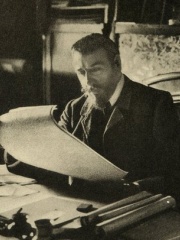
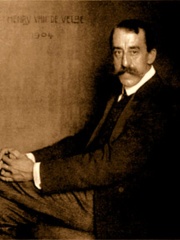
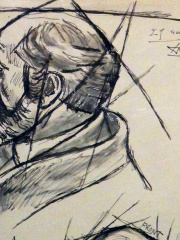
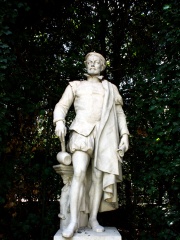
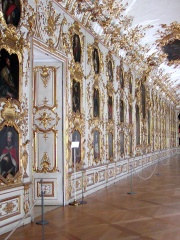
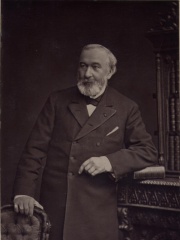

The Most Famous
ARCHITECTS from Belgium
This page contains a list of the greatest Belgian Architects. The pantheon dataset contains 518 Architects, 8 of which were born in Belgium. This makes Belgium the birth place of the 14th most number of Architects behind Denmark, and Czechia.
Top 8
The following people are considered by Pantheon to be the most legendary Belgian Architects of all time. This list of famous Belgian Architects is sorted by HPI (Historical Popularity Index), a metric that aggregates information on a biography’s online popularity.

1. Victor Horta (1861 - 1947)
With an HPI of 69.55, Victor Horta is the most famous Belgian Architect. His biography has been translated into 50 different languages on wikipedia.
Victor Pierre Horta (French pronunciation: [viktɔʁ ɔʁta]; Victor, Baron Horta after 1932; 6 January 1861 – 8 September 1947) was a Belgian architect and designer, and one of the founders of the Art Nouveau movement. He was a fervent admirer of the French architectural theorist Eugène Viollet-le-Duc and his Hôtel Tassel in Brussels (1892–93), often considered the first Art Nouveau house, is based on the work of Viollet-le-Duc. The curving stylized vegetal forms that Horta used in turn influenced many others, including the French architect Hector Guimard, who used it in the first Art Nouveau apartment building he designed in Paris and in the entrances he designed for the Paris Metro. He is also considered a precursor of modern architecture for his open floor plans and his innovative use of iron, steel and glass.Horta's later work moved away from Art Nouveau, and became more geometric and formal, with classical touches, such as columns. He made a highly original use of steel frames and skylights to bring light into the structures, open floor plans, and finely-designed decorative details. His later major works included the Maison du Peuple/Volkshuis (1895–1899), Brussels' Centre for Fine Arts (1923–1929) and Brussels-Central railway station (1913–1952). In 1932, King Albert I conferred on Horta the title of Baron for his services to the field of architecture. After Art Nouveau lost favor, many of Horta's buildings were abandoned, or even destroyed, though his work has since been rehabilitated. Four of the buildings he designed in Brussels were added to the UNESCO World Heritage List in 2000: the Hôtel Tassel, the Hôtel Solvay, the Hôtel van Eetvelde and the Horta House (currently the Horta Museum).

2. Henry van de Velde (1863 - 1957)
With an HPI of 69.39, Henry van de Velde is the 2nd most famous Belgian Architect. His biography has been translated into 45 different languages.
Henry Clemens van de Velde (Dutch: [ˌɑ̃ːˈri vɑn də ˈvɛldə]; 3 April 1863 – 15 October 1957) was a Belgian painter, architect, interior designer, and art theorist. Together with Victor Horta and Paul Hankar, he is considered one of the founders of Art Nouveau in Belgium. He worked in Paris with Siegfried Bing, the founder of the first gallery of Art Nouveau in Paris. Van de Velde spent the most important part of his career in Germany and became a major figure in the German Jugendstil. He had a decisive influence on German architecture and design at the beginning of the 20th century.

3. Auguste Perret (1874 - 1954)
With an HPI of 61.28, Auguste Perret is the 3rd most famous Belgian Architect. His biography has been translated into 31 different languages.
Auguste Perret (12 February 1874 – 25 February 1954) was a French architect and a pioneer of the architectural use of reinforced concrete. His major works include the Théâtre des Champs-Élysées, the first Art Deco building in Paris; the Church of Notre-Dame du Raincy (1922–23); the Mobilier National in Paris (1937); and the French Economic, Social and Environmental Council building in Paris (1937–39). After World War II he designed a group of buildings in the centre of the port city of Le Havre, including St. Joseph's Church, Le Havre, to replace buildings destroyed by bombing during World War II. His reconstruction of the city is now a World Heritage Site for its exceptional urban planning and architecture.

4. Cornelis Floris de Vriendt (1514 - 1575)
With an HPI of 56.39, Cornelis Floris de Vriendt is the 4th most famous Belgian Architect. His biography has been translated into 18 different languages.
Cornelis Floris or Cornelis (II) Floris De Vriendt (c. 1514 – 20 October 1575) was a Flemish sculptor, architect, draughtsman, medallist and designer of prints and luxury. He operated a large workshop in Antwerp from which he worked on many large construction projects in Flanders, Germany and Denmark. He was one of the designers of the Antwerp City Hall. He developed a new style, which was informed by Flemish traditions, the 16th century Italian Renaissance and possibly the School of Fontainebleau. His innovations spread throughout Northern Europe where they had a major influence on the development of sculpture and architecture in the 16th and early 17th centuries.
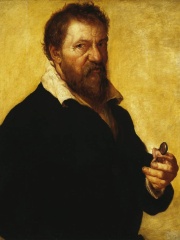
5. Lambert Lombard (1505 - 1566)
With an HPI of 54.07, Lambert Lombard is the 5th most famous Belgian Architect. His biography has been translated into 18 different languages.
Lambert Lombard (French pronunciation: [lɑ̃bɛʁ lɔ̃baʁ]; c. 1505 – August 1566) was a Renaissance painter, architect and theorist for the Prince-Bishopric of Liège. During his career he worked for Jan Gossaert in Middelburg and trained Frans Floris.

6. François de Cuvilliés (1695 - 1768)
With an HPI of 53.83, François de Cuvilliés is the 6th most famous Belgian Architect. His biography has been translated into 17 different languages.
François de Cuvilliés, sometimes referred to as the Elder (23 October 1695, Soignies, Hainaut – 14 April 1768, Munich), was a Belgian-born Bavarian decorative designer and architect. He was instrumental in bringing the Rococo style to the Wittelsbach court at Munich and to Central Europe in general.

7. Joseph Poelaert (1817 - 1879)
With an HPI of 52.07, Joseph Poelaert is the 7th most famous Belgian Architect. Her biography has been translated into 18 different languages.
Joseph Poelaert (21 March 1817 – 3 November 1879) was a Belgian architect. He was entrusted with important projects in Brussels, such as Saint Catherine's Church, the Church of Our Lady of Laeken, the Congress Column, the Royal Theatre of la Monnaie and above all, the Palace of Justice. He was also the great-uncle of the architect Henri Van Dievoet.

8. Fernand de Montigny (1885 - 1974)
With an HPI of 48.04, Fernand de Montigny is the 8th most famous Belgian Architect. His biography has been translated into 17 different languages.
Fernand Alphonse Marie Frédéric de Montigny (5 January 1885 – 2 January 1974) was a Belgian fencer and hockey player. He won two silver medals and two bronze in fencing and a bronze in hockey. He was also the architect of the 1920 Olympic Stadium.
People
Pantheon has 8 people classified as Belgian architects born between 1505 and 1885. Of these 8, none of them are still alive today. The most famous deceased Belgian architects include Victor Horta, Henry van de Velde, and Auguste Perret.
Deceased Belgian Architects
Go to all RankingsVictor Horta
1861 - 1947
HPI: 69.55
Henry van de Velde
1863 - 1957
HPI: 69.39
Auguste Perret
1874 - 1954
HPI: 61.28
Cornelis Floris de Vriendt
1514 - 1575
HPI: 56.39
Lambert Lombard
1505 - 1566
HPI: 54.07
François de Cuvilliés
1695 - 1768
HPI: 53.83
Joseph Poelaert
1817 - 1879
HPI: 52.07
Fernand de Montigny
1885 - 1974
HPI: 48.04
Overlapping Lives
Which Architects were alive at the same time? This visualization shows the lifespans of the 5 most globally memorable Architects since 1700.

